Neurotic Narratives
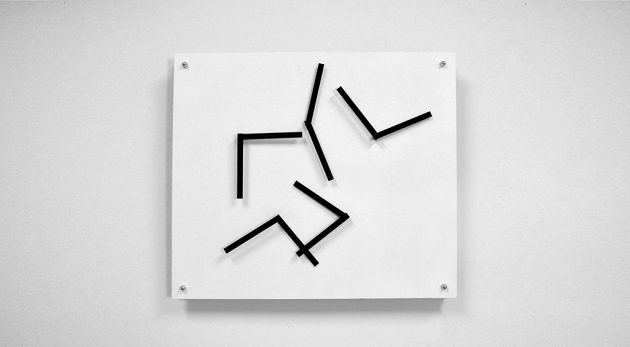
Neurotic Narratives is a series of para-functional artefacts about three narratives from people with a lived experience of mental health. The series goes beyond the paradigm of mental health normativeness and embraces the concept of neurodiversity, picturing the whole of the Being in a Heideggerian approach and focusing on the Individuation of the interviewees, on Simondon’s perspective. My research started on the problematic approach of Human-Centered Design on mental disorders which ostracizes the misfits from what they considered the norm, clustering the non-normatives into the “others” category and never, or rarely, coming up with a fair solution to their needs. Based the concept of Otherness from Jean-François Staszak, it was clear that the problematic of the topic is on the designer, who chooses a criterion that allows humanity to be divided into two groups: one that embodies the norm and whose identity is valued and another that is defined by its faults, devalued and susceptible to discrimination. People with a lived experience of mental health are labeled after their disorder and rarely seen as whole being, whose interests and voice must be heard as much as anyone’s else. From that point I started to interview three individuals about the subject, it evolved to a surprising outcome of three whole narratives and a much deeper perception of the being and the complexity of what is to exist and develop oneself with and through a mental disorder.
The selected individuals present distinguished mental disorders in the spectrum of neurotic disorders being them Dissociative Identity Disorder, Episodic Paroxysmal Anxiety and Compulsive Anxious Behaviour. Each one of those disorders as well as the history and experience of the interviewees is taken into account for creating the whole narrative of the artefacts. It is important to establish that I do not intend to deliver an ultimate universal solution to the problematic relationship between HCD and mental disorders, but to present an experimental artistic approach of the subject as to enlighten further possibilities. The aesthetics of the artefacts are inspired by the Neo-Concrete art movement as well as Nise da Silveira’s work with mental health and art, presented in the Museum of Images of the Unconscious. Both of the inspirations focus on the person as a whole being, the organic aspect of the art and the expression of complex human realities.
J – Dissociative Identity Disorder
J is a british woman who has 5 personalities within her. She shares her body with four other male identities, all with their specific taste, sexuality, history and identity. She developed DID when she was 6 years old due to a traumatic event that she rather not talk about. People who live with DID often dissociate after an abuse in their childhood, it is the way the child finds to cope with the trauma, they make it believe it happened to someone else, not them. That someone else becomes than an alter in their head. After the first split, more can happen. One system, may carry 100 alters, but usually is around 3 or 4. The time and memory are factors that are perceived differently for a DID person. Memory is fragmented, each part has their own share of it, once at each time one personality is emerged and living. Time is also a different matter, for J, as the main alter, she perceives times in leaps and it is hard for her to comprehend time passing when she is not emerged. For the others, time behaves differently in the inner-world, as they call it, when not emerged they go on with their lives inside. Also, the reason why the alters emerge is not clear, sometimes there are triggers, but other times is just random. J said it is important to keep a schedule and a timetable for when an alter must be in charge, they leave notes and keep a journal among themselves to communicate. She was the first one I got in touch when I decided to create this series of artefacts and she was extremely interested in being part of it, since she also is fighting the prejudice against mental disorders. The more i could watch her and her alters the more interesting it became. I could easily spot just by the profile or the pitch of the voice who was it. Later I became fond of each one of them as separated individuals and although they all present themselves to us in the same body, you could still picture what they look like in the inner-world. And this whole experience, of knowing that so much has changed within, and so little is shown in the outside but still, somehow, the image on the surface is a whole new image even though all the elements are the same, created this clear visualisation of how i wanted to represent the narrative.
Five sets of clock hands that together create images. 5 different drawings, one for each personality. In the beginning one can’t differ what is going on between one drawing to the other. But after some time, seeing it over and over, one can recognise what is coming next. And maybe, even picking a favorite one. 5 sets in the same board, as in the same body. The same elements over and over, but still something new comes after every turn. You don’t know when or who is coming next, but still you wait to see them. How do they decide? How do they emerge? What is behind the whiteboard is unknown but it doesn’t matter, on the surface, 5 different drawings, over and over, and once again, new.
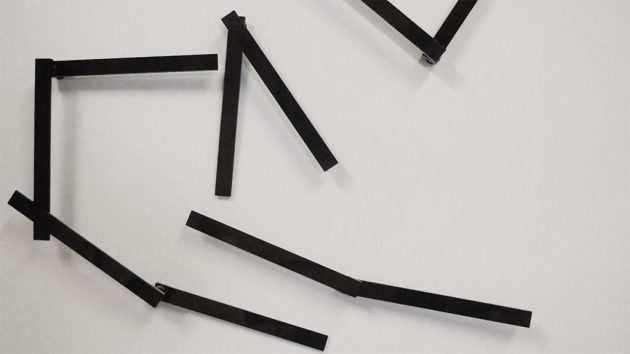
M – Compulsive Anxious Behaviour
M is a math teacher on her 50s. She is divorced, mother of a young woman and has a double master degree. She teaches math to teenagers and adults, she also has compulsive anxious behaviour. Her first symptoms appeared when she was 13 years old. Due to her anxiety whilst alone at home she would compulsively eat. It was not till she was an adult that she got a diagnosis of her disorder. Before she was seen as a girl lacking self-control and who should watch her weight, but in fact her anxiety was the trigger and the compulsion was the coping. She would eat whatever she had in hands, no matter the quantity or even if it was food. She told me that once she ate 5 bananas and 4 oranges one after the other, while waiting her mom to get back home. When her mom hid all the food in the house, she would eat the corners of the paper of her notebook while doing her homework. After he mom passed away when she was 15 years old, her anxiety was suppressed by the urge to be present to her widowed father and orphan young brother. A little more than a year after, her father married again and she felt once more calm and the anxiety gave a break, as she had once more a whole family around her. But after some years, a series of unexpected events triggered her anxiety and compulsion once more. She then seeked treatment, but till the moment it started to work, the anxiety and compulsion continued, the compulsive eating gave place to animal rescuing and later to shopping. This became a cycle of anxious compulsion that would make her make bad decisions while trying to cope and the consequences of the decisions would once more trigger the anxiety.
I thought that, because of her bubbly personality and colourful joy, the anxiety was constantly mistaken for just a personality trait. But after spending some time with her I realised the anxiety and compulsion shaped her personality to the joyful person she is. I specially bounded with her during the interviews and offered to listen to her when she felt like falling into one of the anxiety cycles. And as one of them happened and she called me, I got to see her in this turbulent moment. She knows she is in it and tries to control herself, but before she can even perceive what is happening, she gets into the compulsive behaviour. The second artefact portraits that, the colourful, tangled, confusing but mesmerizing personality that she developed within those years living with compulsive anxious behaviour. Her narrative is like a tangled storyline that if you untangle it loses the beauty. The centerpiece, her inner-strength tries to get out of the entanglement, but faces the tension and barriers of her own While watching the struggle, one cheer for it, as if maybe this time, it will conquer the complicated overlapping lines, but as it once more does not, one admire the beauty of the whole and wonders if when it finally overcomes, what will be of this piece, if not a pile of loose strings? Shouldn’t it just be the way it is right now?
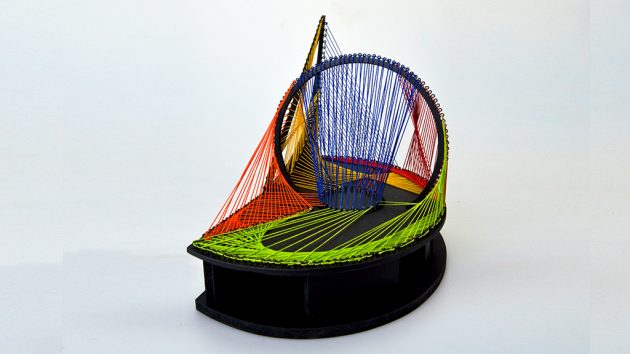
R – Episodic Paroxysmal Anxiety
R is a 33 years old man, married and father of two little twins. He works in a multinational company as the head of casualties department. In his job position he travels the world negotiating and presenting reports in three languages. He is in a different country almost on a weekly basis. But what is odd is that R has episodic paroxysmal anxiety, commonly known as panic disorder. His triggers are social exposure and there are no medication for controlling the panic attacks. He started having panic attacks when he was 9 years old, after a traumatic incident involving his mother. He was only diagnosed when he was 18 years old and still the treatment took some time to be adjusted. Because of his two children he copes with the panic syndrome and performs his job nevertheless. When I asked if he now manages to control the crisis he said it is not as simple as it seems. The Episodic Paroxysmal Anxiety is caused by a chemical imbalance in the brain that makes the body believes it is in danger when it is actually not. In his case the trigger is social encounters and he always knows when is going to happen. He knows the precise path of the attack but he cannot control, he then, with the help of medication, manages to go through without entering in panic for real, caused by the anxiety of getting the attack, but instead he manages to avoid the worst from this whole process. His long living with the disorder made him able to control his mind in an outstanding way, although he cannot avoid the crisis he can go through it with less damage. Another impressive thing is that being under constant adrenaline he now can control his mind when a real dangerous moment is presented.
I was amazed by his self-control but at the same time, the inability to have self-control due to the disorder. I wanted to portrait it in a overlapping performance, in one side one can picture the whole panic attack developing and the struggle, on the other, the beautiful self-acceptance and comprehension of the situation. I created the last artefact to represent those two facets of his experience. The performance is shown through pieces of acrylic that still allow the observer to watch the world around, but it makes it especially hard to focus on anything else once the sound immersion is added. Two different sound sources are running in two separated headphones, as one tries each one of them the experience with it is different. The first represents the whole panic attack as it goes, portraying the feelings and physical impacts of it, the second is his resilience and calmness to to through it without being extremely affected. It still impairs him somewhat, but his mindset and inner-strength makes the experience completely different.

The series of artefacts are deconstructed clocks and watches. I got inspired by the recurrent mention to the different time perception and memory dissociation each one of them described. I wanted to create artefacts that would embody and represent this whole learning process I had: the story of each person the way they wanted to tell me, a full experience portraying the complete narrative of the being, aesthetics and elements that represent the neo-concrete movement and their focus on the experience and message, para-functional objects that would embody a secondary element of the narrative, the interplay between time perception and time in Heidegger’s approach as the moment the Dasein exists. And with all those elements in one place, the complete series would finish this experience with the critic towards society and designers about the ostracization and huddling of those that are neurodiverse. The unexpected paradigm shift the audience faced when entering the gallery I presented the objects was my way of criticizing society about the way one expects a person living with mental disorders to be portrayed. My artefacts were not dramatic or broken in any way. They performed their stories at their own pace, with their own voice, beautifully, camly and resiliently.
All three artefacts are functional objects that here lost their “expected functionality” to serve to the purpose of art, poetics and narrative, they became para-funcional artefacts. The term (para-functionality) means here a form of design where function is used to encourage reflection on how electronic products condition our behaviour. The prefix “para-” suggests that such design is within the realms of utility but attempts to go beyond conventional definitions of functionalism to include the poetic. (Ibid.) This condition of behaviour in my critic is applied also to the conditional expectation of a certain imbalanced lifestyle regarding people with mental disorders by most of the audience I had. The artefacts break the paradigm of psychosocial narratives, disrupting the behavioural limitations that are imposed by technology and design. They present a new way of seeing at things and of perceiving mental disorders and other factors not taken into account by designers. The unexpected shift of who tells the story, a shift on the protagonism of the creation of such objects, from the designer to the user, expands the dimensions of such interchange of data and experiences, creating new conceptual models of needs and personas. The user – here the persons with mental disorders – become, then, co-producers of a new user-centered design paradigm and the narrative experience can be used as the new model to understand humans, rather than pre-made concepts of humanoids – the result of humans plus machina as something not to be criticized or evolved but to be accepted as born this way.
Art and design should be considered the most powerful tools for changing perceptions and breaking stigmas in society. Both are in daily contact with user in everyday life, as gadgets, functional tools or entertainment. It is our duty as designers and artists to acknowledge the faults in society and criticise them, portraying a new perspective in the hope of a paradigm change. The close relation to people’s lives and deep impact on psychosocial behaviours that our work has should not be seen or considered lightly. The work of an artist can be used as a medium to voice the opinions and experiences of those that are not heard by society. I am deeply humbled and grateful for being able to give space to those who wished to tell a side of experiences with mental health that is not usually told. I believe my role as a researcher and artist in this thesis was to advocate for awareness and a different perception on neurodiversity. “But perhaps the most important conclusion is that design is existential and cannot ignore its complicated relationship to people and their mental lives.” (Dunne, 2005, p.148)
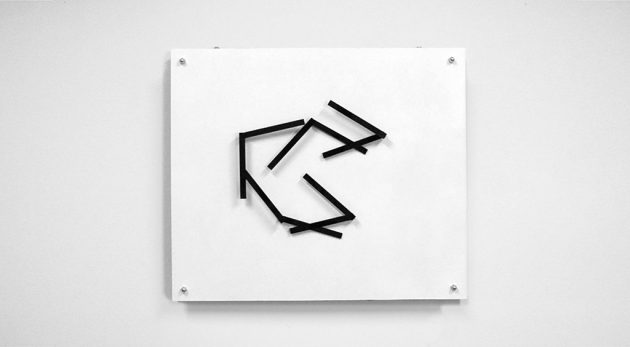
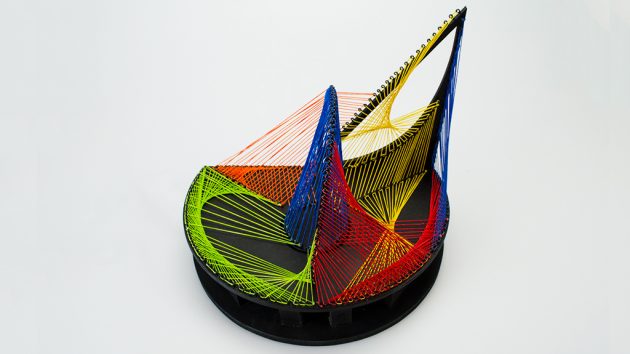
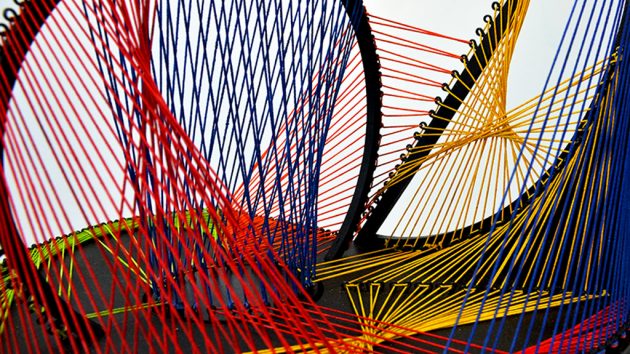

The complete thesis is available for download as a PDF here. (http://www.eugeniaaraujo.com.br/neuroticnarratives/)
For citations, please use: Lima de Araujo, Maria Eugenia (2018) Neurotic Narrative – A series of para-functional artefacts portraying neurotic mental disorders narratives. 1st ed, [online]. [Accessed on (current date)]. Available at: http://www.eugeniaaraujo.com.br/neuroticnarratives/.

